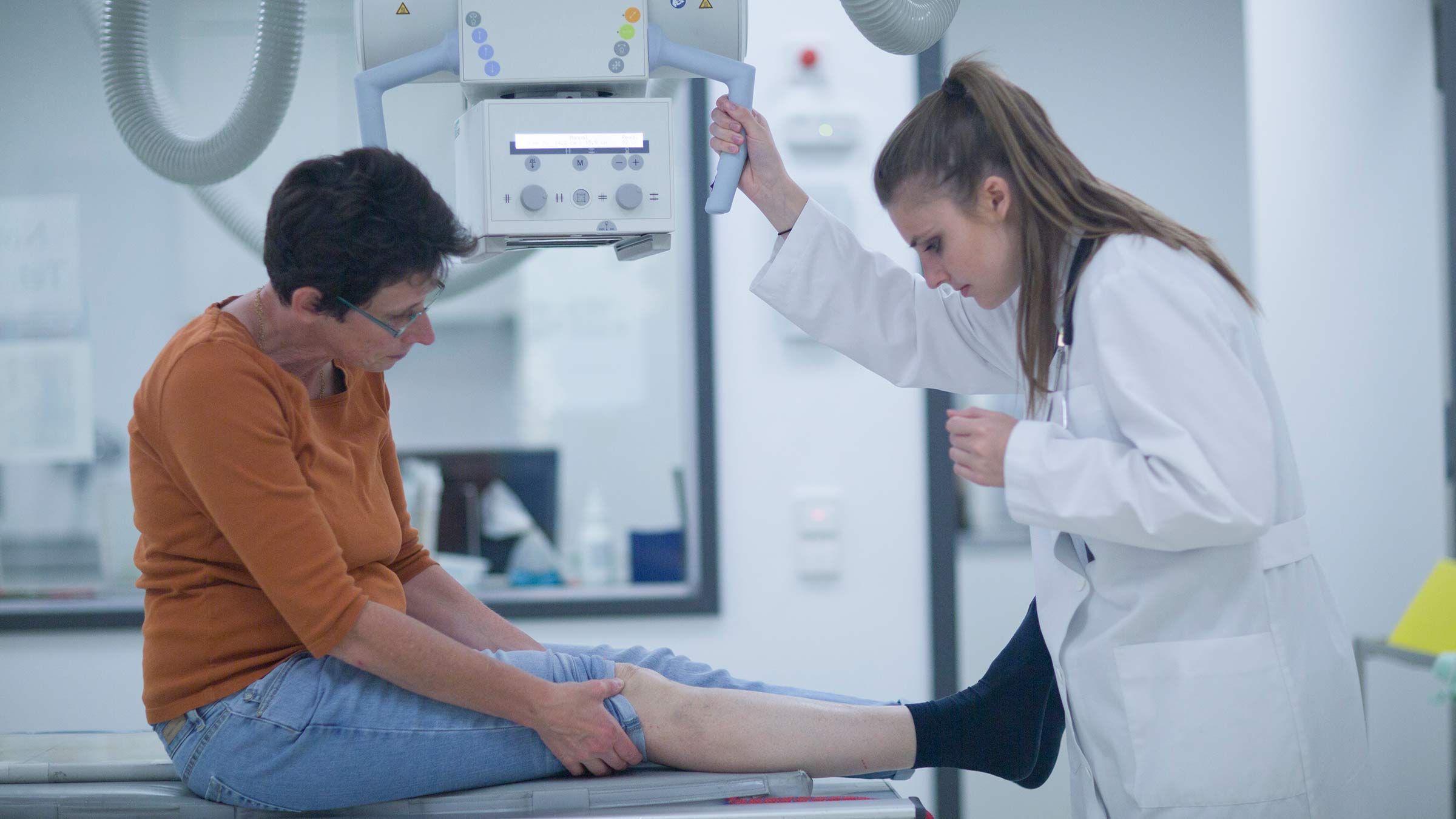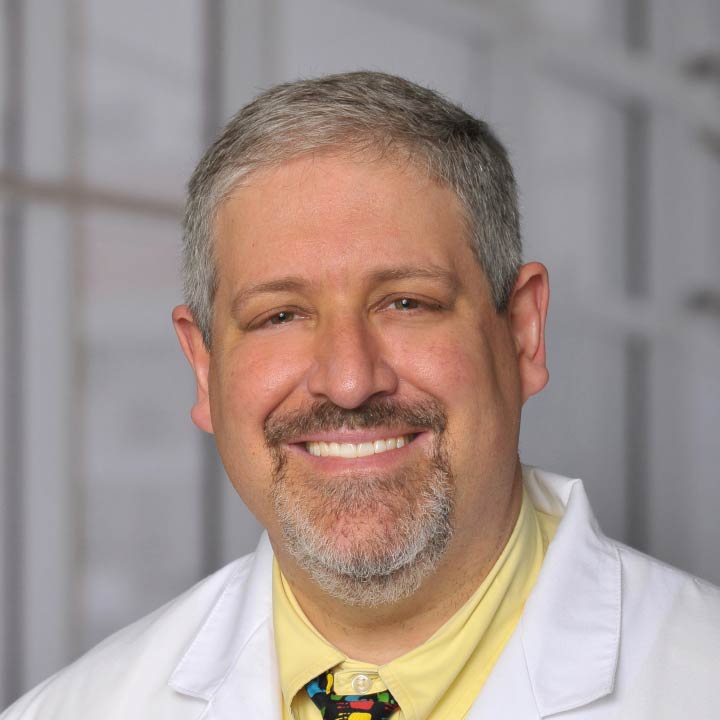What is sarcoma? Answers to commonly asked questions about this cancer
Sarcoma is a relatively rare type of cancer accounting for less than 1% of all cancer diagnoses in the United States. Each year, approximately 16,000 sarcomas are diagnosed in the U.S., including around 3,500 bone sarcomas and approximately 12,500 soft tissue sarcomas.
Here, I answer the most common questions about sarcoma and share how experts at The Ohio State University Comprehensive Cancer Center – Arthur G. James Cancer Hospital and Richard J. Solove Research Institute (OSUCCC – James) are pioneering new treatment and research for the more than 80 types of sarcomas.
- Question What is sarcoma, and what does it feel like?
-
Answer
Sarcoma is a type of cancer that can occur in the bones and muscles or in various locations of the body. It encompasses a broad group of cancers that originate in both bones and soft tissues (known as soft tissue sarcoma). These soft tissues include muscle, fat, blood vessels, nerves, tendons, and joint linings.
Signs and symptoms include:
- Lump: Sarcomas may present as painless lumps under the skin, which can be felt externally.
- Bone pain: Some sarcomas cause long-lasting, constant bone pain.
- Unexplained fractures: You could experience unexpected broken bones, even with minor injuries or no injury at all.
- Abdominal pain: Sarcomas in the abdominal area may cause discomfort.
- Question What kind of tests or imaging can be used to diagnose sarcoma?
-
Answer
To diagnose sarcoma, doctors use a combination of tests and procedures to determine its extent and type. Common diagnostic methods include:
- Physical exam: Your doctor will perform a physical examination to understand your symptoms and look for clues related to sarcoma.
- Imaging tests:
- X-ray: Useful for detecting bone problems.
- CT (computed tomography) scan: Provides detailed cross-sectional images.
- MRI (magnetic resonance imaging) scan: Better for visualizing soft tissue problems or problems inside a bone.
- Ultrasound: Used to document the presence of a lesion.
- Bone and PET (positron emission tomography) scans: Help evaluate the extent of sarcoma.
- Biopsy: A procedure to remove a sample of suspicious tissue for lab testing. Sophisticated tests determine whether the cells are cancerous and the specific type of cancer. Biopsies can be done via needle or during surgery to remove the tumor.
- Question Can sarcoma be mistaken for other conditions?
-
Answer
Lumps and bumps from sarcoma can often be mistaken for benign conditions. Benign masses such as cysts and benign fatty masses are over 100 times more common than soft tissue sarcomas, but it's important to seek medical care if you have a growing mass that continues to get bigger.
- Question Are there sarcoma clinical trials available at Ohio State? How can a patient join a trial?
-
Answer
Because sarcoma is a rare condition, we believe all patients deserve access to the latest medical care and leading-edge treatment for this condition. Every week, our health care team meets to review our new patients. We do everything we can to get our patients involved in clinical trials so that they have access to the latest and best medical treatment available to them. Patients should talk to their doctor to discuss clinical trial options that are right for them.
- Question What’s unique about the sarcoma program at Ohio State?
-
Answer
Ohio State is home to one of the nation’s largest sarcoma programs, which means we can offer some of the most unique and groundbreaking approaches to the treatment of sarcoma through medical innovations and advanced research. Unique aspects of our program include:
- Excellence in sarcoma care: The OSUCCC – James is recognized as a Sarcoma Center of Excellence, which means our elite, diverse team of experts is transforming sarcoma care and leading advancements in treatment. From diagnosis to treatment and access to clinical trials, we can connect patients with some of the most advanced care available in the country.
- Innovative medical technology
- Our program uses 3D printing to create models of bones that help us plan surgeries and make replacement bones and cutting guides to remove tumors. This technology’s flexibility and customization has shown great promise for advancing sarcoma care.
- Through a recent collaboration with The Ohio State University College of Veterinary Medicine, we conducted a clinical trial using a machine called optical coherence tomography (OCT). Some dog breeds suffer from sarcoma at higher rates than humans, so veterinarians use the machine to evaluate tumors after they have been removed to make sure the appropriate amount of tissue has been resected to ensure all the cancer is gone. It’s like an ultrasound with special lighting that indicates healthy and cancerous areas. OCT could have a similar application in human sarcoma care with the goal of using the machine in operating rooms at the OSUCCC – James.
- Groundbreaking surgical techniques
Wounded veterans and sarcoma patients often experience similar symptoms after losing a limb to amputation. Through innovative techniques like targeted muscle reinnervation (TMR) and osseointegration, patients who undergo amputation due to cancer can control snap-on artificial limbs, have better stability and less phantom limb pain compared with traditional prosthetic limbs that are put into sockets. TMR and osseointegration can lessen the discomfort of standard prosthetics overall and enhance a patient’s limb function and quality of life.
- Pioneering customized solutions, such as a reverse total shoulder replacement, the OSUCCC – James was one of the first hospitals to use this kind of replacement in patients with bone cancer in their shoulders. During the procedure, a surgeon removes the damaged parts of the shoulder joint and replaces them with artificial implants. The new replacement implants provide patients with better range of motion compared to previous reconstruction options and allow many patients to return to work and the activities they enjoy.

The experts at The James are pioneering new treatments and research for the more than 80 types of sarcomas
Trust your care to The James.
Learn more








